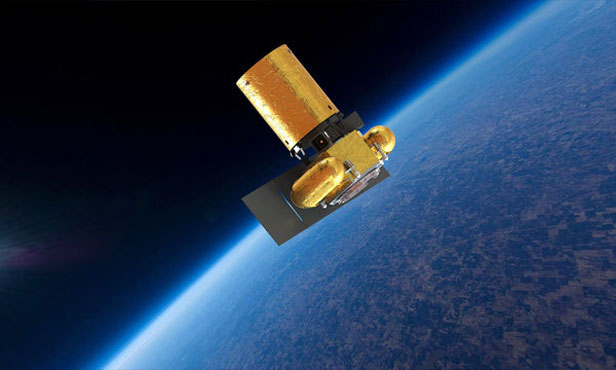Asteroids Could Be Mined for Fuel, Says Company

A startup called Planetary Resources has announced ambitious plans to survey asteroids and ultimately mine them for water that could be converted to the liquid hydrogen and oxygen needed to refuel spacecraft in orbit.
The company intends to begin by launching a series of small satellites into Earth orbit with telescopes and instruments to study near-Earth asteroids and identify the most promising candidates for later prospecting missions. The first of these Arkyd-101 satellites, currently under development, will launch within two years, probably hitching a ride into orbit on a larger satellite’s launch, the company announced at a press conference held at the Museum of Flight in Seattle today.
Backed by a celebrity team of investors, including Larry Page, Eric Schmidt, James Cameron, and Ross Perot Jr., who are putting in undisclosed amounts, Planetary Resources plans to harvest water ice and other volatile chemicals from nearby asteroids and bring them to fuel depots in Earth orbit—essentially, mini space stations that spacecraft could dock to—by 2020. Once there, water could be turned into propellants and sold to fill up the tanks of everything from commercial satellites to NASA deep-space vehicles.
NASA studies have previously found that fuel depots could reduce the price tag of deep-space exploration because spacecraft could take off from Earth with less fuel than they do today, which would allow the use of smaller, cheaper rockets. Filling an orbiting depot with propellants from asteroids could be far less expensive in the long run than supplying them from Earth, according to Planetary Resources cofounder Eric Anderson.
An emerging range of new commercial systems, from SpaceX’s low-cost Falcon series of launch vehicles to large space-station modules under development by Bigelow Aerospace, could also benefit from such depots, Anderson said.
The plan has its share of skeptics. “Technically, could they do it? I have no doubt,” says Henry Hertzfeld, a professor at George Washington University who studies space policy and economics. But he is not sure who the customers would be or what they would be willing to pay, and he says that the idea of mining on asteroids raises unresolved legal issues. Ownership of space resources is a gray area in space law, with no clear allowance for private property rights on asteroids and other celestial bodies. “You can easily build a contrasting case where it makes no sense at all,” Hertzfeld says.
The company’s team includes a number of former NASA Jet Propulsion Lab engineers who “jumped ship to come and really redefine the way robotic space exploration can be done,” said company president Chris Lewicki, himself a veteran of the Mars Exploration Rover and Phoenix Mars Lander missions. The emphasis, he said, will be on small teams and simple, cheap spacecraft; each Arkyd-101 weighs only 20 kilograms. Thanks to new technologies like low-power, high-bandwidth laser communications, these small satellites are expected to be capable of doing what it took a large NASA spacecraft to do a few decades ago. Anderson said the company may also try to sell the satellites to government and commercial customers, providing a near-term revenue stream.
Lewicki acknowledged that actual asteroid mining is still years in the future for Planetary Resources. But, he said, “we are taking what is that first necessary step to bring it closer to reality.”
Keep Reading
Most Popular
Large language models can do jaw-dropping things. But nobody knows exactly why.
And that's a problem. Figuring it out is one of the biggest scientific puzzles of our time and a crucial step towards controlling more powerful future models.
How scientists traced a mysterious covid case back to six toilets
When wastewater surveillance turns into a hunt for a single infected individual, the ethics get tricky.
The problem with plug-in hybrids? Their drivers.
Plug-in hybrids are often sold as a transition to EVs, but new data from Europe shows we’re still underestimating the emissions they produce.
Google DeepMind’s new generative model makes Super Mario–like games from scratch
Genie learns how to control games by watching hours and hours of video. It could help train next-gen robots too.
Stay connected
Get the latest updates from
MIT Technology Review
Discover special offers, top stories, upcoming events, and more.